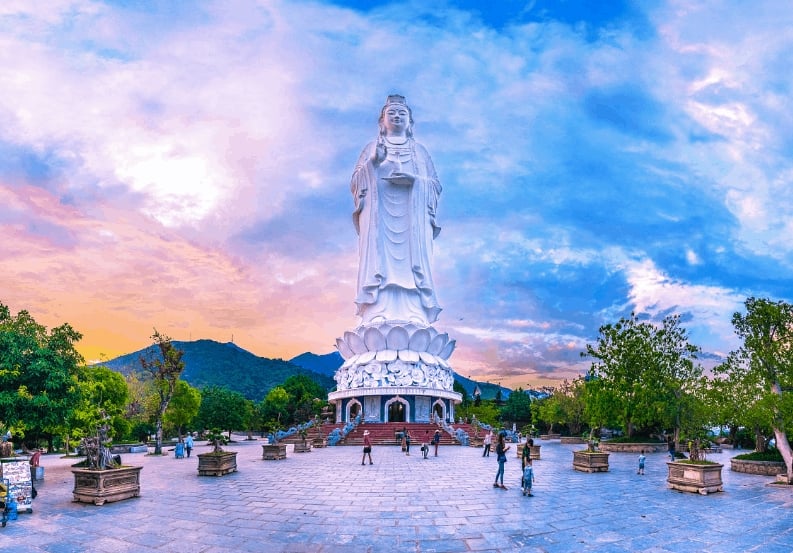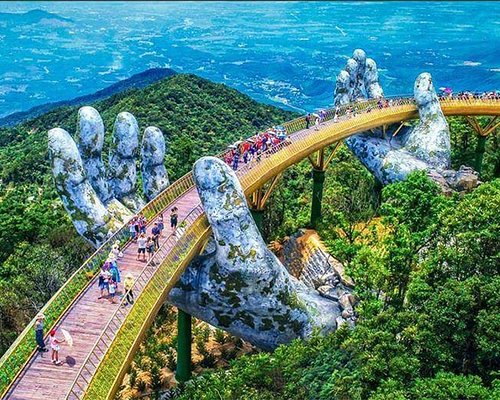
Introduction
Explore Vietnam’s 다낭밤문화 captivating landscapes and vibrant culture beyond the tourist brochures. From Hanoi’s lively streets to the tranquil Ha Long Bay, Vietnam’s authenticity shines through its rich history, diverse culture, and breathtaking scenery. Uncover the essence of Vietnam tourism as we highlight top destinations, cultural encounters, and culinary delights that define Vietnam as a traveler’s haven.
Discovering Vietnam’s Hidden Gems
Hanoi: The Heartbeat of Vietnam
Hanoi, the capital of Vietnam, harmoniously blends ancient history with modern progress. Strolling through the Old Quarter reveals a lively street scene, where vendors peddle traditional Vietnamese pho alongside trendy fashion. At the heart of the city lies Hoan Kiem Lake, a serene sanctuary amidst the urban buzz, encircled by temples and historic sites.
- Must-Visit: Ho Chi Minh Mausoleum, Temple of Literature, Thang Long Water Puppet Theatre.
- Tip: Explore the Old Quarter on foot to truly soak in the local atmosphere.
Ha Long Bay: Nature’s Masterpiece
Ha Long Bay, a distinguished UNESCO World Heritage site, captivates with its emerald waters and myriad towering limestone islands crowned with lush rainforests. Navigating through this bay presents a surreal adventure, unveiling awe-inspiring panoramas and inviting escapades like kayaking and uncovering concealed caves.
- Must-Visit: Sung Sot Cave, Ti Top Island, Cua Van Floating Village.
- Tip: Opt for an overnight cruise to experience the bay’s beauty at sunset and sunrise.
Hoi An: The Ancient Town
Imbued with well-preserved architecture and a distinctive culture, Hoi An captivates visitors by whisking them back in time. Renowned for its lantern-lit streets, traditional wooden dwellings, and vibrant night markets, the town exudes charm. Complemented by the nearby beaches and countryside, Hoi An stands as a multifaceted destination.
- Must-Visit: Japanese Covered Bridge, Hoi An Ancient Town, An Bang Beach.
- Tip: Visit during the Lantern Festival, held on the 14th day of each lunar month, for a magical experience.
Hue: The Imperial City
Hue, the once imperial capital, boasts a wealth of history and culture. At the heart of the city lies the magnificent Imperial City, comprising grand palaces, temples, fortified walls, and majestic gates. Enhancing its tranquil allure, the Perfume River gracefully winds its way through the enchanting city of Hue.
- Must-Visit: Imperial City, Thien Mu Pagoda, Tomb of Khai Dinh.
- Tip: Take a boat ride on the Perfume River to explore the royal tombs and pagodas.
Cultural Experiences
Traditional Vietnamese Cuisine
Vietnamese cuisine is celebrated for its harmonious blend of flavors, use of fresh ingredients, and nutritional richness. Whether savoring street food or experiencing fine dining, the culinary landscape of the country is diverse and extensive.
- Must-Try Dishes: Pho, Banh Mi, Bun Cha, Goi Cuon (spring rolls), Ca Phe Trung (egg coffee).
- Tip: Join a cooking class to learn how to make authentic Vietnamese dishes.
Festivals and Traditions
Vietnamese festivals are deeply rooted in tradition and offer a glimpse into the country’s cultural heritage. Tet Nguyen Dan (Lunar New Year) is the most important festival, marked by feasts, family gatherings, and various cultural performances.
- Other Notable Festivals: Mid-Autumn Festival, Hue Festival, Hoi An Lantern Festival.
- Tip: Plan your visit around these festivals to experience Vietnam’s vibrant culture firsthand.
Local Handicrafts and Souvenirs
Vietnamese handicrafts showcase the nation’s vibrant cultural legacy. From intricate silk embroidery to exquisite lacquerware, these creations serve as exceptional and enduring mementos.
- Popular Souvenirs: Non-La (conical hats), Ao Dai (traditional dress), Silk products, Bamboo items.
- Tip: Visit local markets and workshops to see artisans at work and purchase authentic products.
Adventure and Eco-Tourism
Sapa: The Gateway to the Highlands
Situated in northern Vietnam, Sapa is famed for its terraced rice fields, ethnic minority enclaves, and awe-inspiring mountain vistas. Embarking on a trek through Sapa’s hills presents a captivating immersion into the area’s natural splendor and cultural richness.
- Must-visit: Muong Hoa Valley, Fansipan Mountain, Cat Cat Village.
- Tip: Hire a local guide for trekking to gain insights into the local culture and history.
Phong Nha-Ke Bang National Park
Phong Nha-Ke Bang National Park, another UNESCO World Heritage site, is famous for its stunning limestone karst landscapes and extensive cave systems. The park is a haven for adventure seekers and nature lovers.
- Must-Visit: Son Doong Cave, Paradise Cave, Dark Cave.
- Tip: Book guided tours to explore the caves safely and learn about their geological significance.
Mekong Delta: The Rice Bowl of Vietnam
The Mekong Delta, renowned for its intricate web of rivers and canals, stands as Vietnam’s agricultural epicenter. Embarking on a boat voyage across the delta unveils a distinctive glimpse into the indigenous lifestyle, showcasing vibrant floating markets, lush fruit orchards, and quaint traditional villages.
- Must-Visit: Cai Rang Floating Market, Ben Tre Coconut Gardens, Vinh Trang Pagoda.
- Tip: Visit the floating markets early in the morning to witness the bustling trade and vibrant atmosphere.
Sustainable and Responsible Tourism
Supporting Local Communities
Tourism in Vietnam presents chances to uplift local communities and champion sustainable initiatives. Opting for stays in locally-owned lodgings, dining at family-operated eateries, and buying handicrafts directly from artisans are effortless ways to bolster the local economy.
- Tip: Look for eco-friendly and community-based tourism initiatives that promote responsible travel.
Environmental Conservation Efforts
Vietnam’s exquisite natural scenery stands as a key asset, prompting dedicated preservation endeavors. National parks and protected zones are pivotal in safeguarding biodiversity and fostering sustainable eco-tourism practices.
- Tip: Respect local wildlife and habitats by following guidelines and minimizing your environmental impact.
Practical Travel Tips
Best Time to Visit
Vietnam boasts a diverse climate across its regions, allowing for year-round visits. The optimal time to explore depends on your preferences for regions and activities.
- Northern Vietnam: October to April (cool and dry season).
- Central Vietnam: February to August (dry season).
- Southern Vietnam: December to April (dry season).
Travel Essentials
When preparing for a visit to Vietnam, remember to pack the following essentials:
- Visa Requirements: Check the latest visa regulations and apply for a visa if required.
- Currency: The local currency is Vietnamese Dong (VND). It’s advisable to carry cash, especially in rural areas.
- Language: While Vietnamese is the official language, English is widely spoken in tourist areas.
- Health and Safety: Stay hydrated, use sunscreen, and follow basic safety precautions.
Transportation
Vietnam provides an array of transportation choices, ranging from domestic flights and trains to buses. For a richer experience, contemplate exploring on a motorbike or bicycle.
- Tip: Use reputable transportation services and book tickets in advance for long-distance travel.
Conclusion
Vietnam’s allure emanates from its genuine essence, encompassing a vibrant cultural legacy and awe-inspiring natural beauty. Delve beyond conventional tourist guides to uncover hidden treasures, cultural marvels, and local delicacies, immersing yourself in Vietnam’s true spirit. Whether you crave adventure, cultural enrichment, or leisure, Vietnam promises an unparalleled and enduring journey.

